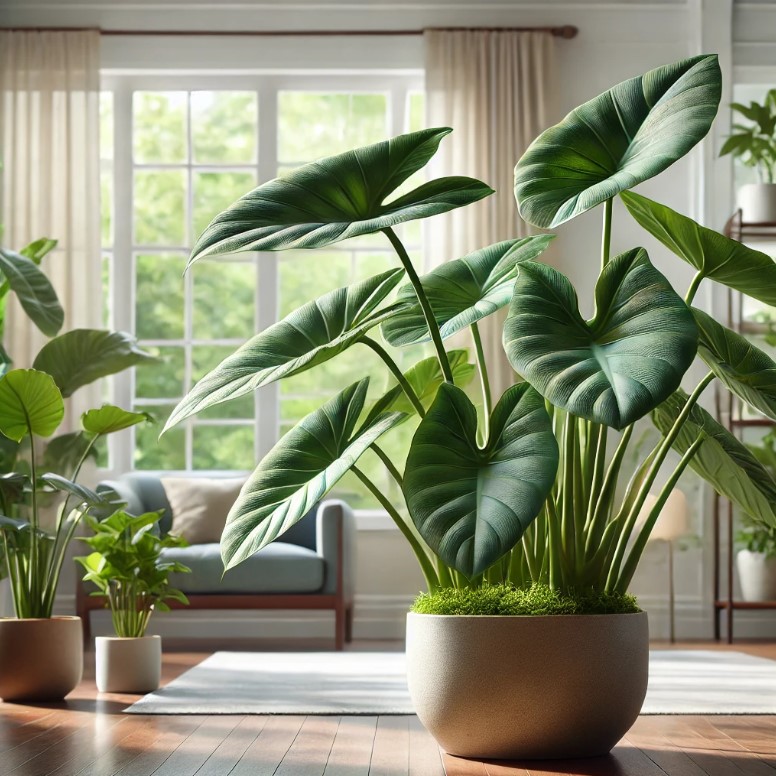
With its unique wing-shaped leaf structure that resembles the wings of a stingray, Alocasia Stingray is also known for its great beauty and shape and is often found among indoor garden plants or plant collectors. But, as every plant, it needs some needed attention and perfect surroundings. Seeing your Alocasia Stingray drooping can be worrying, however, fortunately for us this is typically the symptom of another problem making it relatively easy to rectify once you have determined what the problem is.
In this article, we are going to explore the most common reasons that can cause your Alocasia Stingray plant droop and what you can do to get your plant back on track. No matter what your experience level with plants, knowing how to care for this oddity is vital, both for its growth and beauty.
1. Content CONTEXT Why Is My Alocasia Stingray Drooping?
If your plant has begun drooping that generally means something is off with the conditions in its environment or how you are taking care of it. As Alocasia Stingrays tend to be quite sensitive to changes in water, light temperature and humidity it is important that you diagnose the cause of any issue as soon as possible! However, the drooping leaves could be a result of overwatering and underwatering at the same time, wrong lighting conditions, pests infestation or sudden changes in environment.
2. Watering The Importance of Watering your Plants
Remember that your Alocasia Stingray has some particular watering needs. Another reason for leaves to droop is root rot due to excessive watering. Underwatering on the other hand will cause your plant to lose moisture causing it to wilt, become droopy, too. Watering correctly is important, you must water just the right amount so that it does not drown its roots.
3. Proper Watering Methods for Alocasia Stingray
Over or Under-Watering They can tell when your Alocasia Stingray is thirsty, but be sure to check the soil moisture first before watering. Water only once the top inch of soil is dry to the touch. Be sure to dump the saucer under the pot if you see water pooling in it. Soggy soil prevents air from reaching the roots and will cause drooping, etc.
4. Symptoms of both Overwatering and Underwatering
Yellowing leaves and soft mush are a few signs of overwater which can be root rot. Overwatered plants have droopy leaves which are soft but underwatered will have dry, crispy leafs that plummet a lot. Finding that balance is the key to a healthy Alocasia environment.
5. They will thrive in a bright space, but you should also protect them from direct sunlight.
We talked about how important it is to have the right temperature for your plant. Alocasia Stingray:Provide bright, indirect light In insufficient light, the plant will stretch out and become leggy before eventually drooping due to no energy production. On the other hand, too much direct sunlight can burn the leaves and wilt them to begin drooping.
6. Dullness that Causes Sagging Due to Bad Lighting
To add more light to the room, your Alocasia Stingray will try its best and search for more by getting longer stems. This leads to elongated growth and droopy hanging. To prevent this, put your plant adjacent to a window with indirect sunlight or use grow lights if natural light is rare.
7. Ideal Temperature And Humidity For Alocasia
Alocasia likes warm and humid conditions. When your plant begins to droop is when there is too dry or too cold temperature in your home. ALOCASIA STINGRAY TEMPERATURE AND HUMIDITY Alocasia Stingray grows best at room temperature, ideally around 65°F to 75°F (18°C to 24°C), and a humidity level of anywhere between 60-80%. Frequent misting of your plant or the use of a humidifier can help to maintain these optimum settings.
8. How to Deal with Temperature Stress in Alocasia Stingray
Sudden temperature changes placing your plant near or within drafts, radiators, and air conditioning can make an Alocasia retaliate. This can cause leaves to droop or curl. For the best results, just keep your plant in a steady warm spot with no extreme temperature changes.
9. Why Drained Soil is Beneficial
One issue you can run into with your plant is root rot which takes place when the soaked soil does not drain effectively. If possible, plant your Alocasia in a pot with drainage holes and with well draining potting soil. This way, it can dry the roots between watering and prevent moisture that can cause drooping.
10. Repotting Alocasia Stingray for Better Growth
You want to repot mainly when your Alocasia becomes root-bound or if the potting soil is no longer retaining well draining capacity. Repot using only 1-2 inches larger of a container than it is currently in and with fresh, well draining potting soil. This helps to provide the roots with plenty of space to grow and thrive, which prevents drooping due to root stress.
11. Alocasia plants are vulnerable to a few common pests.
Alocasia plants like Stingray are susceptible to spider mites, aphids and mealybugs. These pests can put your plant under stress which could cause leaves to droop or other signs of distress. Check your plant for pests regularly and spray the plant with insecticidal soap or neem oil when required.
12. Preventing and Treating Pest Infestations
To avoid pests clean your plant with a damp cloth on the leaves to get rid of dirt and dust which may help in reducing pest problems. If you see any pest, take out the plant immediately and spray it with mild insecticide/neem oil. Do this every couple of weeks and your Alocasia will be pest free, healthy AF!
13. How to Fertilize Your Alocasia Stingray
Balanced Fertilizer (e.g. Alocasia plants thrive with a balanced fertilizer to help produce strong, healthy foliage.) From spring through summer, feed your Alocasia Stingray every 4 to 6 weeks with a liquid houseplant fertilizer. In fall and winter when the plant is not growing actively, you should cut down on fertilization.
14. Reasons Why Alocasia Stingray get Stressed & How to minimize it?
They are susceptible to different stress factors like changes in the environment, watering issues and pests. Extended periods of stress can cause leaf droop and weak growth. This helps minimize the risks of stress by keeping routine care schedules and observing what the plant requires; in turn this supports a healthy,surviving plant.
15. How To Tell Your Alocasia Stingray Is Back On Track
New growth will come when your Alocasia Stingray recovers from droopy days, standing straighter and growing bigger leaves. Publicity color, and firm solid leaves, are a clear indication that the plant is on the recovery route.
Conclusion
To care for an Alocasia Stingray, you need to know its specific needs and how to create the perfect growing condition. Dealing with watering, lighting, temperatureas and optimising the pest exclusion mechanism are ways to get your droopy plant back in shape. Your Alocasia Stingray will soon be back to its former self, making a stunning display in your home or garden once again with the right care. Monitor its conditions, offer regular maintenance, and relish in the aesthetics of this unique flora.






